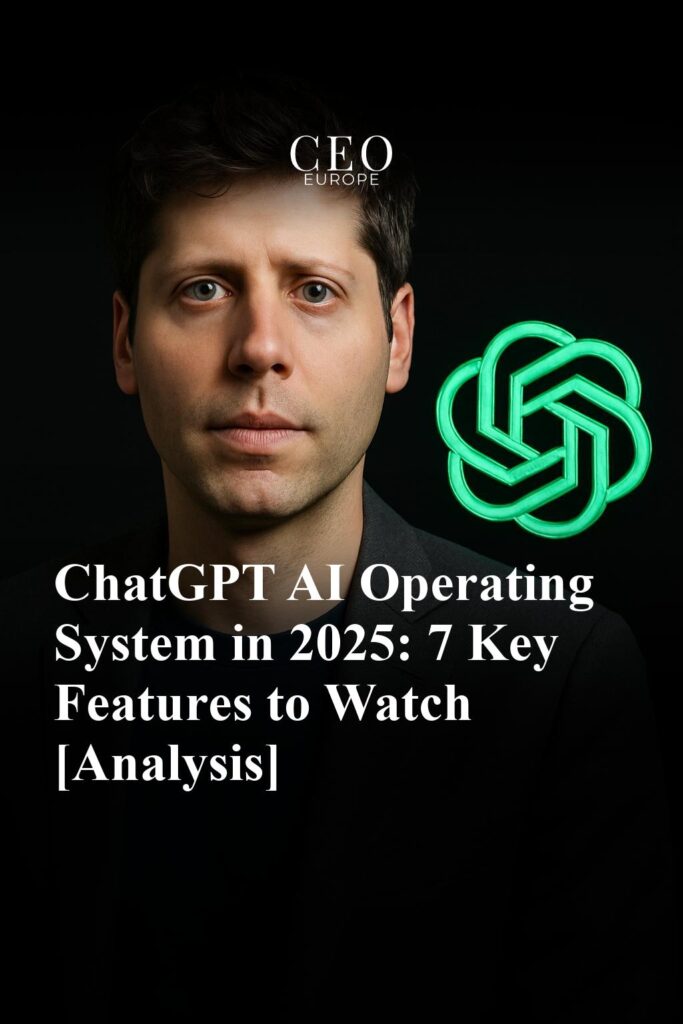Introduction
The ChatGPT AI operating system is poised to redefine how users and developers interact with artificial intelligence by 2025. Central to this evolution is the integration of third-party AI apps, which expands functionality beyond the native capabilities of ChatGPT itself. By embedding these external applications within the OpenAI ecosystem, the AI OS aims to create a seamless, customizable user experience that extends across diverse tasks and industries. This development signals a shift from singular AI interactions toward a comprehensive platform where ChatGPT acts as an operating core, enhancing workflows, e-commerce, education, and more. Much like a smartphone operating system that harnesses countless apps to serve varied user needs, the ChatGPT AI operating system will serve as a hub where AI productivity tools converge in one place [1].
Background
Currently, ChatGPT supports around 800 million weekly active users, highlighting its rapid adoption and global relevance. This extensive base provides fertile ground for AI OS development, led by Nick Turley at OpenAI. Turley envisions transforming ChatGPT from a conversational AI into a fully-fledged ChatGPT AI operating system by integrating diverse external apps, similar to past OS evolutions like Windows or macOS that grew through third-party software ecosystems. Historically, operating systems evolved from basic command centers to richly interactive platforms as users demanded more versatile software interactions. OpenAI’s strategy echoes this trajectory but places AI at the nucleus, making the system adaptive and contextually intelligent, a significant leap beyond traditional OS capabilities [1].
Trends
Emerging trends in AI OS development revolve around the influx of third-party AI apps and their increasing sophistication. Businesses are aggressively adopting AI to build applications that prioritize user-friendliness and situational awareness, facilitating tasks like customer service, content creation, and personalized recommendations. A notable trend is the rise of AI-driven e-commerce solutions embedded within the ChatGPT ecosystem, enabling seamless shopping experiences powered by conversational interfaces. This shift reflects a broader industry movement where AI platforms act as digital marketplaces of services, a pattern seen in smartphone app stores but now amplified by AI’s contextual understanding and decision support [1].
For readers interested in related technology advancements, exploring the impact of AI on sports startups presents complementary insights into AI integration across industries AI in sports startups 2025.
Insights
Nick Turley offers key insights into the future trajectory of the ChatGPT AI operating system, emphasizing that its success hinges on a robust ecosystem of third-party integrations rather than recreating existing services like music streaming or online courses. User feedback indicates strong demand for a fluid, responsive experience where third-party apps supplement and enhance core AI functionalities. This insight suggests a collaborative future where developers and users co-create value within the OpenAI ecosystem. The analogy here is akin to a Swiss Army knife, where each third-party app acts as a different tool, collectively broadening ChatGPT’s ability to assist and perform diverse tasks. These incremental improvements in user experience are essential for widespread adoption and sustained engagement within the AI OS framework [1].
Forecast
Looking toward 2025, the ChatGPT AI operating system is expected to profoundly reshape software applications by establishing AI as a foundational platform rather than a standalone service. Advancements will likely include enhanced contextual awareness, multi-modal input processing, and integrated workflow automation. The market for third-party AI apps is predicted to expand rapidly, supporting innovative sectors such as e-commerce, healthcare, and education within the OpenAI ecosystem. This growth may parallel the smartphone app economy, creating new developer and business opportunities. For example, just as apps once converted smartphones into versatile pocket computers, third-party AI apps will transform ChatGPT into a multifunctional AI operating system tailored to specific user needs and organizational goals [1].
How-to
To interact effectively with the ChatGPT AI operating system, users should start by exploring available third-party apps aligned with their tasks, ensuring they leverage the AI’s full potential. Developers aiming to create compatible applications must adhere to OpenAI’s integration standards, focusing on seamless user experience and data privacy. For initial users, best practices include customizing the AI OS environment by selecting complementary apps, providing feedback for refinement, and staying updated on emerging tools. Think of this process as setting up a workstation: choosing the right software, configuring settings, and optimizing workspace flow ensures maximum productivity. Additionally, embracing resources that help enhance digital presence through AI, such as brand discovery strategies, can complement overall use Brand discovery AI [1].
FAQ
Common questions about the ChatGPT AI operating system frequently focus on how third-party apps integrate securely and what this means for data safety. Users ask how OpenAI ensures privacy while allowing external developers access. OpenAI is committed to stringent security measures and transparent data policies within its ecosystem. Another frequent query involves how the OpenAI ecosystem will evolve; it is anticipated to adopt open standards, facilitate developer collaboration, and support scalable AI functionalities over time. This continuous evolution is crucial for maintaining user trust and advancing AI capabilities. For deeper insights on innovative AI applications across industries, one may refer to analyses on robotics and physical AI development to understand broader AI trajectories SoftBank robotics acquisition [1].
Conclusion
The ChatGPT AI operating system represents a pivotal advancement in reshaping software interaction by blending AI intelligence with third-party app ecosystems. As an evolving platform, it heralds transformative changes across sectors, simplifying complex tasks and enabling personalized workflows within the OpenAI ecosystem. Embracing this AI technology is essential for future-ready applications, businesses, and users alike. Staying informed on the latest AI OS developments and third-party integration trends will empower stakeholders to harness its full potential, fostering innovation and competitive advantage in the digital age [1].
Sources and references
1. OpenAI’s Nick Turley on transforming ChatGPT into an operating system, TechCrunch, https://techcrunch.com/2025/10/08/openais-nick-turley-on-transforming-chatgpt-into-an-operating-system/

